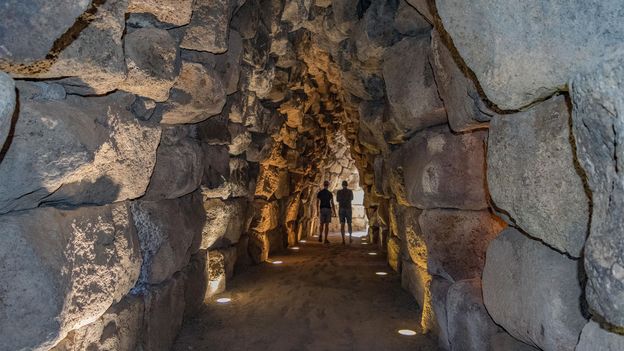Sardinia's mysterious beehive towers
Expecting not to find much more than a pile of big stones, I followed the sign off the motorway into a little car park and there it was, rising from a flat, green landscape covered in little white flowers, with a few donkeys dotted around: Nuraghe Losa. From a distance, it looked like a big sandcastle with its top crumbling away, but as I walked towards it, I began to realise the colossal size of the monument in front of me.
Nuraghi (the plural of nuraghe) are massive conical stone towers that pepper the landscape of the Italian island of Sardinia. Built between 1600 and 1200BCE, these mysterious Bronze Age bastions were constructed by carefully placing huge, roughly worked stones, weighing several tons each, on top of each other in a truncated formation.
Continued here